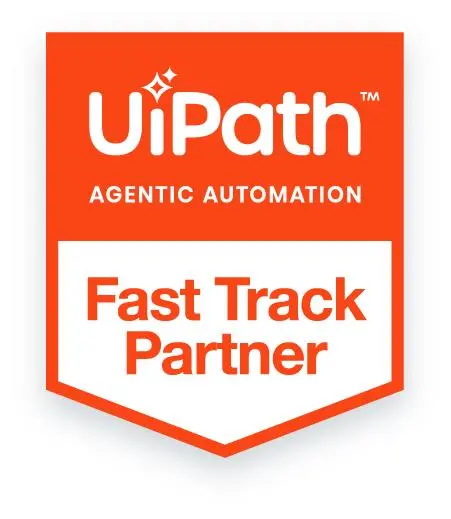
Key Takeaways
- Agentic AI unlocks autonomous execution, not just task automation, allowing enterprises to shift from managing rules to achieving outcomes across complex workflows with minimal human oversight.
- Legacy automation often breaks down at scale, while agentic systems adapt in real-time using feedback, dynamic planning, and intelligent context resolution across disparate enterprise systems.
- Real-world deployments in healthcare, finance, and manufacturing prove that agentic workflows can outperform RPA by handling exceptions, learning from context, and making outcome-driven decisions.
- Building agentic architectures requires modular cognitive layers, vector-based memory, orchestration frameworks like LangChain, and integration with existing APIs, bots, and compliance systems.
- Challenges such as agent conflicts, trust, and black-box behavior must be addressed with robust governance, prompt traceability, explainability, and enterprise-grade security models from the outset.
Over the last decade, digital transformation has become a strategic imperative. Businesses have digitized paper-based processes, adopted cloud platforms, and implemented automation across operations. Yet, many transformation programs are stalling—not because the tools are lacking, but because they lack autonomy.
Most current solutions, such as Robotic Process Automation (RPA), only mimic predefined tasks. When something changes—be it a data format, a system update, or a new policy—those bots fail. Enterprises end up building brittle automations that require constant reengineering.
Integrate Agentic AI—a shift from rule-bound automation to adaptive, intelligent, and goal-oriented agents. These agents do not just “do tasks.” They own outcomes, operate across systems, and learn from feedback to continuously improve. Integrating Agentic AI means equipping your digital enterprise with a brain capable of making informed decisions and executing autonomously.
Also read: Ethical Considerations When Deploying Autonomous Agents
What Makes Agentic AI Different?
Agentic AI is not merely an additional layer on top of traditional AI or automation. It’s a fundamentally different model of computation and execution.
At its core, Agentic AI encompasses perception, planning, action, and learning—the same pillars that underpin human cognition. While RPA executes pre-scripted logic and machine learning makes pattern-based predictions, agents synthesize context, infer intent, and take initiative.
For example, a traditional RPA bot might extract data from an invoice and key it into an ERP. But if there’s a missing field or an unknown supplier, it fails. An Agentic AI agent, by contrast, might:
- Pull historical purchase orders to identify the supplier
- Look up tax information online.
- Draft an email to request the missing info.
- Decide whether to hold or escalate.
Digital Transformation Has Stalled—Here’s Why
Despite the surge in automation investment, the value delivered often plateaus after initial wins. Why?
- Hardcoded Automation Breaks: As business rules change, bots must be reprogrammed manually.
- Siloed Systems and Data: CRMs, ERPs, and ticketing systems still lack native coordination.
- Humans Still Mediate Exceptions: Automation covers the happy path; humans handle complexity.
- Legacy Thinking: Many enterprises confuse digitization with transformation. Scanning documents or deploying chatbots doesn’t make an enterprise intelligent.
Agentic AI breaks through these limitations by enabling systems to handle exceptions, reason across silos, and adapt to change—without requiring constant human intervention.
The Hidden Gaps Agentic AI Can Fill
There are invisible cracks in enterprise operations where traditional automation fails:
1. Dynamic Business Logic
Policies, regulations, and contracts are subject to frequent changes. Agentic agents use language models and symbolic logic to adapt workflows to new policy conditions.
2. Inter-System Decisions
Suppose a shipment delay in a logistics system requires an update in billing and customer communication. Today, this is a manual task. An agent can detect the event, reason through its implications, and take coordinated actions.
3. Email and Document Overload
Millions of hours are lost processing semi-structured inputs like emails, PDFs, or scanned forms. Agents can ingest, interpret, and respond across various channels, transforming unstructured data into actionable insights.
4. Fuzzy Human Requests
“Can you check if this vendor is compliant and initiate onboarding?” is a complex instruction. Agentic AI can parse such instructions, understand what is being asked, break them down into subgoals, and execute autonomously.
These are the “last mile” problems that agents are designed to solve—and where businesses reclaim serious value.
Agentic AI Implementation Framework
Agentic AI can’t be deployed like a plug-and-play RPA bot. It requires a structured implementation framework:
A. Process Dissection & Goal Mapping
Map out business goals, not steps. Define outcome objectives for agents, such as “ensure timely customer onboarding” rather than “fill out form X.”
Break extensive processes into modular agent-owned units—each with a defined goal, state transitions, inputs, constraints, and success criteria.
B. Build the Cognitive Architecture
- Perception Layer: Agents observe environments using APIs, OCR, NLP, and event listeners.
- Memory Layer: Agents store interaction history, policies, and past decisions using vector DBs or key-value stores.
- Planning Layer: Agents utilize reasoning models (e.g., LangChain or semantic graphs) to plan actions dynamically.
- Action Layer: This invokes APIs, bots, scripts, or other agents to execute plans.
- Adaptation Layer: Reinforcement learning or supervised feedback loops train the agent to improve its performance over time.
C. Feedback Integration
Every failure, human intervention, or successful case becomes training data. This makes your agent smarter over time, unlike bots that remain static.
Real-World Use Cases That Are Not Just Hypothetical
While Agentic AI may sound futuristic, several forward-thinking enterprises have already deployed it in real-world scenarios, demonstrating tangible ROI, reduced human intervention, and intelligent adaptability across complex domains like healthcare, finance, and manufacturing. Below are three compelling examples where agents are not just assisting but actively driving outcomes.
Healthcare—Intelligent Preauthorization
An insurance agent monitors clinical data for new diagnosis codes, extracts relevant CPT codes, matches them with the policy, and submits preauthorization—all in real time. It reduces delays and manual review, leading to quicker patient care and a 70% decrease in rejections.
Finance—Adaptive Expense Auditing
Agents validate travel reimbursements, match receipts to policy, identify anomalies (e.g., duplicate claims), and auto-escalate only what requires human attention. Accuracy improves, and audit cycles reduce by 40–60%.
Manufacturing—Supply Chain Crisis Management
When a delay occurs, agents reroute orders, evaluate available alternate suppliers based on cost + delivery windows, and auto-initiate purchase orders. Human procurement teams are alerted only in critical scenarios.
These are not theories—they are production-grade Agentic AI deployments that evolve the way work happens.
Building Your Agentic Execution Layer
Agentic AI must sit in an intelligent middleware layer that integrates systems, APIs, data lakes, and workflows.
Essential Components To Build an Agentic Execution Layer

- Event Bus (e.g., Kafka or Azure Event Grid) to track triggers across the enterprise
- Action Brokers (e.g., RPA bots, API gateways, automation tools)
- Semantic Memory (vector DBs for retrieving instructions, documents, FAQs)
- LLM Orchestration (e.g., LangChain, Semantic Kernel) to chain reasoning
- Control Plane to monitor, throttle, or isolate agents during runtime
- Policy Sandbox to enforce rules, ethics, and compliance
This setup enables the modular deployment of agents with plug-and-play capabilities, each owning a specific vertical responsibility.
How to Choose the Right Workflows for Agents?
Don’t apply Agentic AI indiscriminately. Evaluate use cases based on:
- Autonomy Potential: Can the outcome be achieved independently?
- Cognitive Load: Does it require reasoning or information synthesis?
- Data Availability: Are the right inputs accessible to the agent?
- Escalation Logic: Are escalation paths definable for unknown cases?
Ideal candidates include:
- Quote-to-Cash disputes
- Employee onboarding
- Compliance verification
- Invoice exception handling
- Multi-system reporting
Avoid highly subjective tasks (e.g., leadership decisions) unless supervised.
Enterprise Architecture Considerations
Enterprise Architecture ConsiderationsShifting to an agentic operating model has architectural implications:
Security
Agents must be treated like digital employees—authenticated, authorized, and sandboxed. Use role-based access control (RBAC), OAuth2, and tokenized credentials.
Observability
Track every agent’s action via observability platforms like Datadog, OpenTelemetry, or custom dashboards. Maintain agent logs, including decisions made, reasons, and errors encountered.
Governance
Establish:
- Agent registry
- Audit and compliance logs
- Guardrails for ethical behavior
- Approval workflows for agent deployment
CIOs must ensure agents are governed just like applications or users.
Metrics for Agentic Transformation Success
Evaluate the impact of Agentic AI using meaningful metrics:
| Metric | Why It Matters |
| Autonomy Rate | % of processes completed without human touch |
| Error Resolution Speed | Time taken by the agent to resolve or escalate issues |
| Learning Efficiency | Reduction in errors or escalations over time |
| Process Coverage | % of end-to-end process handled by agents |
| Adaptation Rate | Agent’s ability to incorporate new rules without retraining |
These help move beyond vanity metrics, such as “bots deployed” or “FTEs saved.”
Challenges Nobody Talks About
Despite the promise of autonomy and intelligence, implementing Agentic AI comes with its own set of complex, often overlooked challenges—ones that go beyond technology and touch governance, safety, and human acceptance. Understanding these pitfalls is critical to scaling agents responsibly and sustainably.
Semantic Confusion
Agents relying on LLMs may misinterpret vague instructions. You need prompt engineering, feedback loops, and precondition checks.
Inter-Agent Conflicts
Multiple agents may act on the same object (e.g., an invoice, a user ticket). Without conflict resolution protocols, this can cause errors. Consider locking mechanisms or master-agent architectures.
Black-Box Behavior
LLM-driven agents may act in ways you don’t anticipate. Solve this by:
- Logging prompts and outputs
- Embedding traceability
- Setting response thresholds
User Trust
Users may resist agent decisions unless explanations are provided for them. Use explainable AI (XAI) modules to justify actions.
Conclusion: The End of Manual Intervention
Agentic AI represents more than technological evolution—it’s a redefinition of how digital enterprises operate.
With agents capable of autonomous goal execution, we finally move beyond task automation to workflow ownership, adaptive execution, and human-like reasoning.
The winners of tomorrow will be enterprises that:
- Rethink process ownership
- Design for autonomy
- Govern for scale
Your ERP won’t need babysitting. Your workflows won’t rely on escalation queues. Your systems will work together proactively, adaptively, and intelligently.
This isn’t the future. With Agentic AI, the age of autonomous enterprise operations is already here.








